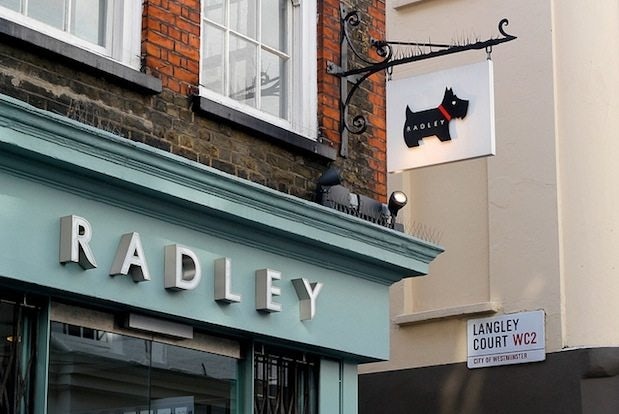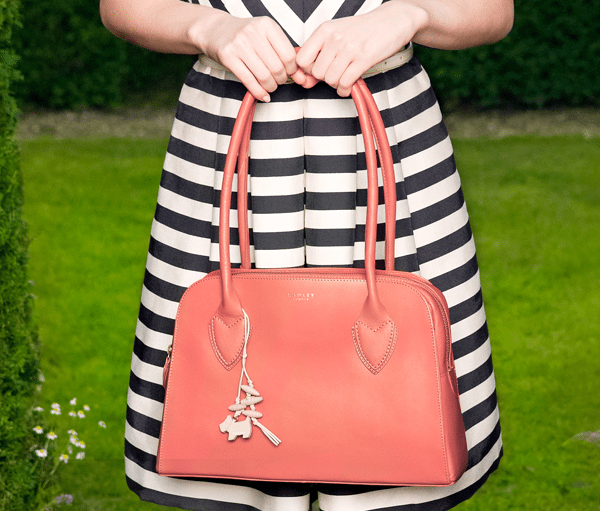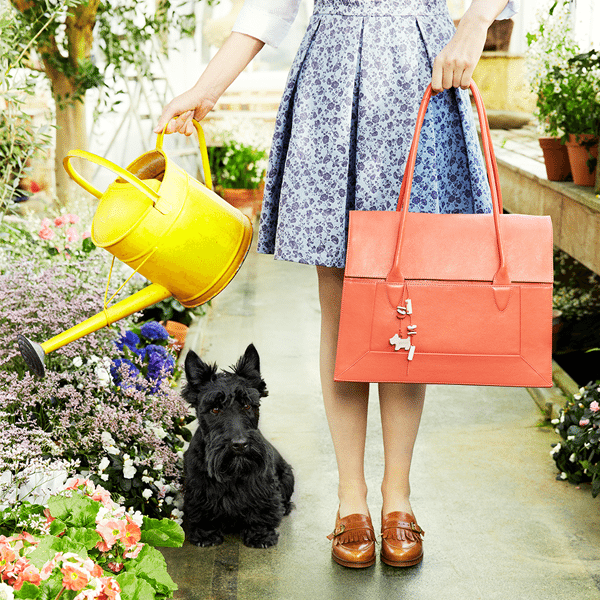
Radley's distinctive "Scottie Dog" logo is gaining growing recognition on the mainland. (Radley)
Founded in 1998, London-based Radley exemplifies the type of affordable luxury brand sought after by China’s twenty-something fashion-lover: light on flash, colorful and light-hearted, and attractively priced. Known for their distinctive colorways and “Scottie Dog” logo, Radley’s handbags and accessories have a devoted buyer base worldwide. Since opening its first store in 2005 on London’s Kings Road, Radley has expanded to 33 standalone stores and 200 points of sale in the UK, and is available at 65 concessions in 10 countries, spanning from Europe to Japan.
Despite having no points of sale in mainland China or Hong Kong (its first franchise in Taipei will open at the end of the month), Radley’s absence has increased the brand’s appeal there. Having turned their attention to affordable luxury alternatives to Coach, Mulberry, Longchamp and others, more Chinese shoppers are embracing the likes of Radley, which offer (relative) inaccessibility in China at an attractive price-point. Thus far, this has fueled a thriving gray-market Radley trade on Taobao, where over 500 Radley bags and accessories—mostly of questionable authenticity—are currently listed.
Recently, I caught up with Radley CEO Xavier Simonet to learn a little more about the brand’s growing sales to Chinese shoppers, the enduring appeal of “Britishness,” and what it is that sets Radley apart from the pack.
With the boom in Europe-bound Chinese tourism, has Radley seen a natural uptick in Chinese customers?#
We have a lot of Chinese tourists visiting our stores in the UK, particularly in London Covent Garden, London Westfield White City, Bicester Village, and in Cambridge.
We can see that the Radley brand is very appealing to them—the Britishness of course, but also the colors and the affordable luxury price points. We have a high conversion rate with Chinese tourists and transaction values with Chinese customers are higher than our average.

Are you finding that Chinese shoppers are already well acquainted with your brand, or just seeing it for the first time?#
They do not know much about the brand—as we are just launching in Greater China, but what attracts them initially is the Radley “LONDON” signage above our stores and then the colors, shapes, and price points.
For many British heritage brands, "London-ness" or "Britishness" is a major draw for new customers from emerging markets like China. What do you do feel it is about Radley that sets you apart from the competition?#
What sets us apart is Britishness but also our affordable price points, without even mentioning our creativity, great quality leathers and colors. I need to mention that leather products are becoming increasingly popular in China.

Do you localize your marketing efforts for the Asia market, or maintain a consistent message and strategy?#
At the moment, our marketing is all done here in London and we always make sure that the Britishness element is well communicated—even “exaggerated” when talking to international customers as it is a critical factor of success for us.
Does Radley have plans to tailor collections, or create special limited-edition items, for the Asia market in general and Chinese consumers in particular?#
In terms of products, we do special ranges for Japan from time to time and might do more limited editions for Asia in the future.
